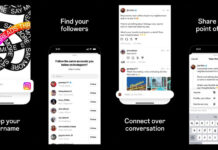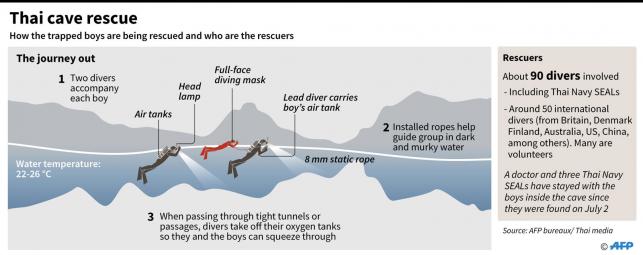The way in which we consume ‘content’ has undoubtedly changed. From newspapers to magazines, radio, television and the many platforms offered up by the internet, there’s an ever-evolving process through which people can find out about the world around them.
But, while the method of delivery may have changed one thing has remained constant – and even pre-dates all of the media above. Quite simply it’s in our nature as human beings to be interested in the things that happen to fellow human beings.
No matter how it is delivered, a good human interest story has always had power. The best journalists and writers are able to recognise how stories impact on people and bring this power out to great effect.
It’s important to understand what a human interest story is, how it’s delivered, what the impact is and what lessons can be learned when it comes to almost any piece of content. Explore the different content types.
The Story
A human interest story puts people at the heart of the events. Doing this brings a two-fold benefit. It gives the reader someone to relate to and taps into our natural curiosity in the lives of others.
The emotion of others can raise awareness of worthy causes and help people to realise the real human impact of a whole host of issues, ranging right up from local politics to war and everything in between. These stories also, at a simple level, can give readers something fun, amusing, emotional or thought-provoking to engage with.
John Dilley, Senior Lecturer and Director of the Leicester Center for Journalism, is undertaking research into how local and national newspapers covered the First World War.
His blog offers a real-time week-by-week account of how the conflict was reported 100 years ago in the Market Harborough Advertiser. He told me how one thing in particular shines out from the pages of 1914 and 1915 that he’s looked at so far:
“When you look at those papers from 100 years ago, of course they’re different – the size of the newspaper, the page layout, the language used in the headlines – but you know what the core of those stories is all about? It’s human interest.”
In a series of moving letters from the front in particular, the human impact of the horrors of war hit home much harder than the ‘party line’ dispatches printed by the nationals and, for John, show how the desire to relate stories to real people has always been important and continues to have resonance in today’s world.
He said: “It crosses over the decades and generations. It has always been like that.
We’ve always wanted to read human interest stories – it’s just about getting people – whether that be newspapers, social media followers or clients – to realise that that’s what readers want.
“I think it’s the single most important thing for the reader and I think it is for the journalist as well.”
Identify
John tells would-be students that there are three reasons why people train to be journalists. The first two are the chance to write and also to be creative but: “The most important part is because we’ve got an interest in people and if you’ve got an interest in people then you can find stories about people that other people will want to read about.”
Everyone has a story to tell, however big or small. Writers and journalists need to develop an instinct for finding the issues that are relevant to their readership.
A good writer doesn’t just commit pen to paper – or indeed pound away at the keyboard – they should also be a good listener and be naturally curious about the world around them.
You’ll have nothing to write without good, powerful material. Interview technique is probably a separate piece entirely, but suffice to say you need to ask plenty of questions, be inquisitive without being intrusive and don’t be too rigid. The worst interviewers simply ask a list of questions, robot fashion, without reacting to what is said and exploring the answers further. Often comments that could be ‘throwaway’ actually form the heart of a powerful human interest piece. The same logic applies to research for an article, as interesting facts or information can take you off into a different – sometimes more interesting – direction than you originally considered.
Writing
The power of any story or piece of content can easily be lost if the writing does not do it justice. When it comes to human interest stories it is not the job of the writer to take centre stage. Powerful, purposeful prose should underpin any good story – but you must let the emotion of the piece come through from the subject. It’s not a task in proving how clever you are.
Strong, emotive quotes should be at the heart of the text, featuring as quickly and prominently as possible – and those words should be backed up by heartfelt photos and videos. Don’t simply tell the reader what you’ve seen, heard or felt – let them find that emotion for themselves.
Delivery
The strength of Facebook and Twitter merely opens up new avenues for human interest stories. Stories can emerge on social media and be spread quickly and effectively this way. A powerful piece will be something that is worth sharing, posting and re-tweeting. If the reader is sufficiently moved by a story they will pass that on to their followers.
If anything, regional news reporters have been liberated by this – their work can go beyond their traditional geographical boundaries to a potentially global audience.
The recent example of Winnie Blagden from Sheffield shows this. BBC Radio Sheffield made an appeal for cards on behalf of Winnie, who has no surviving family and not much contact with the outside world beyond her carers, ahead of her 100th birthday.
The appeal went viral – reaching an audience far beyond the station’s 240,000 listeners and 10,200 Facebook followers – and saw presents and cards pledged from far and wide – including the US. Good human interest content is universal.
People who write content do need to think about different platforms. The heart of the story is the same but, for example, the picture is crucial to help catch the eye on Facebook while strong headlines or stand-out quotes work well to jump out of a busy Twitter timeline. Again, these platforms don’t change the heart of the story – it’s just that different parts of the presentation of the story matter more depending on where they are shared.
Consider, too, the rise of the Vlogger. The YouTube shows produced by these people invite us into their lives and homes. We invest in them and their lives and they are able to deliver matter on what feels like a one-to-one individual level. Our human connection with the subject makes the content more enjoyable and powerful.
For example the worldwide story of rescuing the Thai stranded football team in a cave. This story had the entire planet on edge waiting for humans to save humans































